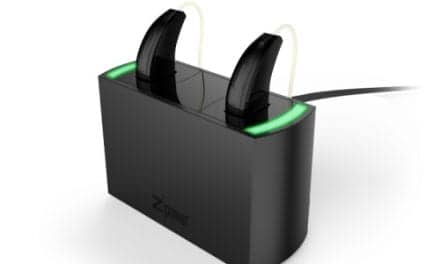Opinion | November 2015 Hearing Review
Providing thorough, efficient, and targeted hearing aid validation and verification can elevate hearing aid fittings from good to exceptional.
The fact that more than 60% of all hearing aids returned to manufacturers are still on the “first-fit” setting suggests that a process that incorporates and fulfills best practices in hearing aid verification is lacking.
In recent years, the concept of “best practices” has been used to cover many functions. Indeed, any thorough discussion of the best practices for hearing testing should take into account all of those procedures that have been developed over the past 110 years. It should also recognize that some of these test procedures, however brilliant, can be redundant, too complicated or not sufficiently diagnostic enough to contribute to a clear understanding of the problems and potential solutions for the patient.
Hearing science researcher, Robyn Cox, PhD, and colleagues at The University of Memphis recently published a paper1 that sent shock waves through the hearing care field. They showed that a hearing aid with “basic” or “essential” technology achieves equivalent high levels in patient outcomes compared to “advanced” or top-of-the-line hearing aids. Caveats aside (eg, they used only two hearing aid brands in their study), it’s a very compelling paper. However, what appears to be lost in discussions of their study results is a very important fact that Dr Cox et al were careful to emphasize: both of the hearing aid technology levels used in this study were fit via best practices and both yielded exceptional outcomes. In other words, it’s the fitting regimen that matters; not the device itself (as long as the device has the requisite capabilities to help remediate the hearing loss). The virtues of good fitting practices have been extolled by hearing care professionals for the past 40+ years.
When we pay tribute to the work of a great surgeon or an amazing artist, we never imply the surgeon’s scalpel or the artist’s brush is the source of their brilliance. Their tools are not what define their greatness. It is implicitly understood that a surgeon’s or artist’s success boils down to a unique process, combined with ample skills and equal parts inspiration and perspiration. Neither should we demean ourselves as hearing care professionals by viewing the hearing aid as anything more than a tool (albeit an important one) for the remediation of hearing loss. Indeed, the key to successful hearing aid fittings is process, and that process is comprised of what we now call “best practices.”
Some Thoughts on Best Practices and Hearing Testing
Patient history. It is critical to begin any discussion of best practices with the need for a thorough patient history, followed up with questions regarding the pertinent parts of a history form. As I noted in two previous articles on this subject,2,3 it’s difficult to make a definitive list of questions (ie, the list evolves with our developing knowledge of audiology, co-morbidities, etc); rather, what is important is an approach to questioning and an order to those questions. This helps in your assessment, as well as the development of the patient’s understanding and perception of their own auditory system’s function. It is often amazing how accurate patient perceptions are in rendering a rough sketch of the audiogram and speech test scores. The key is to design a Patient History Form so you can start anticipating what might be expected from the patient report, and then investigate fully any anomalies that provide a new window into the individual’s auditory challenges.
The evolution of testing procedures. It is instructive to examine the development of many of the test procedures currently being used. At the turn of the 20th century, ENT physicians began using tuning forks to test a patient’s hearing. They twanged the tuning fork in front of the ear, and when the patient reported the sound had disappeared, the base of the fork was placed directly against the mastoid; if the sound was still heard, the hearing loss was conductive. On the other hand, if when the sound disappeared from in front of the ear and also disappeared when the base of the fork was placed against the mastoid, the hearing problem was sensorineural.
This procedure was used successfully until the late 1930s when a group of linguists at Harvard divided up the Lorge-Thorndike list of the 1,000 most common words in English into groups of 50 words each. Each of the 50-word lists was required to be phonetically balanced, with the same incidence in the list that the phoneme has in conversational English. A new focus on phonemes led to the development of speech tests using single syllable words from the phonetically balanced word list that allowed us to approximate the incidence of the phonemes in a given passage.
In the years after WWII and between the Korean War and the war in Vietnam, a number of procedures were invented that constitute the central battery of test procedures. These tests include the suprathreshold adaption test (STAT) developed by James Jerger, PhD, and the staggered spondaic word (SSW) test, by Jack Katz, PhD. These were followed by the Sensory Acuity Level (SAL) test, Synthetic Sentence Identification-Ipsilateral Competing Message (SSI-ICM) test by Jerger and Deborah Hayes, PhD, as well as the Contralateral Competing Message (SSI-CCM) test also developed by Jerger. This battery of procedures looked at central auditory processing problems.
For better or worse, we no longer use most of these tests. We find it easier, or more expeditious, to present a monaural speech test to the right ear with masking in the left, a monaural speech test to the left with masking in the right, and a binaural test. In this instance, if the binaural score is not as good as or is better than the best monaural score, then a central problem may be indicated.
In truth, there are hundreds of hearing tests that have been developed over the past 50 years. Almost anybody who wanted to get a PhD in the field of audiology could do so by inventing a new test! Most of these had a fairly short lifespan, either because they were not time-efficient, or did not provide a complete or clear picture of the underlying auditory problem.
Few hearing tests have withstood the test of time. Puretone air conduction tests were first developed in the early part of the 20th Century, and (right or wrong) are still viewed by many as the “gold standard” in audiology. (For more information, see Dr Jerger’s history4 of the “upside-down” audiogram in the March 2013 Hearing Review.) Puretone bone conduction tests were developed shortly thereafter. As noted previously, speech tests were invented to approximate the incidence of phonemes in a given passage. These tests are also still widely used today, as are the Speech Recognition Threshold (SRT) and the word recognition tests.
It occurred to several researchers in the 1960s that, if the binaural score was not as good as the best monaural score, there must be a “central problem.” The Speech in Noise (SIN) test uses a noisy background as a masker, allowing us to determine speech understanding when both signals are presented together. As David Fabry, PhD, recently pointed out in an excellent article, moving beyond the audiogram allows us to look at “suprathreshold psycho-physical (speech-in-noise tests, loudness normalization) and objective measures (otoacoustic emissions, auditory evoked potentials, and positron emission tomography) that enhance intervention strategies and optimize the fit of hearing aids and cochlear implants.”5
Also pointed out in a previous article,6 there is also a category collectively known as oto-immittance testing, which includes acoustic middle ear muscle reflex thresholds, middle ear muscle reflex decay, and other specialized tests, such as Eustachian Tube function tests and physical volume tests. Of these, tympanometry is probably the most effective and efficient test ever devised for evaluating the middle ear system. It is useable with children, adults, and seniors. The procedure permits us to get a great deal of high-quality information quickly without any effort on the part of the patient. In fact, the patient doesn’t even have to be conscious or especially participatory—one more reason why this test is useful and effective, particularly for special populations. It has a high level of reliability and repeatability, and it provides fairly easy-to-interpret results in about 5 minutes for both ears. Why only about half of dispensing offices routinely perform tympanometry is baffling.
Making best practices a reality. The utility of various forms of hearing aid verification, particularly real-ear measurement (REM), as well as live speech mapping and validation methods have been proven time and again.7 Every professional organization in our field has published a list of preferred practices, and many excellent articles have enumerated the tests and services involved in best practices.8,9 However, the fact that more than 60% of all hearing aids returned to manufacturers are still on the “first-fit” setting suggests that a process that incorporates and fulfills best practices in hearing aid verification is lacking.
Efficiency in a busy practice. Our battery of test procedures—which will evolve as our knowledge of the auditory system and processing abilities evolve—allow us to indicate to a doctor whether or not there is a lesion somewhere in the auditory system, and if so, where it is likely to be found, and (hopefully) what the care team can do about it. Generally, nothing is revealed to the patient until all tests are completed, so it isn’t important which order the tests are performed in, as long as the results of these tests will delineate the most efficient methods for identifying the most useful and expeditious hearing aid implementation.
I have previously written that it’s not practice that makes perfect; it’s “perfect practice” that makes perfect. We are looking at some of the most difficult, demanding, yet most information-generating procedures ever devised relative to the ear and auditory system. Although many of the tests that have been devised are no longer in practical use, the care and attention to detail used in those procedures are integral to best practices. Best practices are synonymous with perfect practice—whatever tests you do you must do perfectly. If we are tempted to skip steps or do sloppy work, we’ll get sloppy results.
I don’t know how long it took me to learn to test accurately, but I know it took me a long time. I would rather take the time to do it right than provide substandard care to my patients who put their trust in me. We should never lose sight of what best practices are about. It’s not necessarily always about time; it’s about doing something right. If you make time to conduct the proper tests during the diagnostic and fitting process, you won’t end up spending time correcting things post-fitting, and creating dissatisfied patients.
This article is not about “good practice” or “good enough practice,” but “best practice.” The judgement of “best practice” requires evaluation of all of the potential procedures available and the selection of those that are the most efficient, informative, and productive. That kind of judgment could very well change as new test procedures come along. Certainly, testing has changed over the past 100+ years. There are an almost infinite number of test protocols out there, and since our quality attention time is limited, we need to judge which of those procedures will produce the best results and the most informative outcomes.
The concept of best practice requires thought, evaluation, elimination, acceptance, and adherence to a process. No hearing test is the best test for every patient. As we evolve as practitioners, tests that contribute to our overall appreciation of the auditory problems of our patients and provide answers that are actionable and expeditious are the kind of “best practices” that we must strive for.
Acknowledgements
This article is dedicated to Marjorie Skafte, who urged me to write my first article for Hearing Instruments in 1980. I would also like to thank James Jerger, Charles Berlin, and Rich Nodar for teaching me that “best practice” is not just about finding the answers, but about asking the right questions. These four people opened big doors for me, and allowed me to succeed in the “small world” of hearing care.
References
-
Cox RM, Johnson JA, Xu J. Impact of advanced hearing aid technology on speech understanding for older listeners with mild to moderate, adult-onset, sensorineural hearing loss. Gerontology. 2014;60(6):557-68. doi: 10.1159/000362547.
-
McSpaden JB. In-FORM-ation for better patient care. Hearing Review. 2010;17(10):14-24. Available at: https://hearingreview.com/2010/09/in-form-ation-for-better-patient-carepart-1-a-look-at-the-patient-history-form-and-how-it-might-be-used-more-effectively
-
McSpaden JB. In-FORM-ation for better patient care, Part 2: A look at the standard “audiogram.” Hearing Review. 2010;17(13):10-23. Available at: https://hearingreview.com/2010/12/in-form-ation-for-better-patient-care-part-2-another-look-at-the-standard-audiogram-form
-
Jerger J. Why the audiogram is upside-down. Hearing Review. 2013;20(4)[Apr]:16-26. Available at: https://hearingreview.com/2013/03/why-the-audiogram-is-upside-down/
-
Fabry D. Moving beyond the audiogram. Audiology Today. 2015;27(3):34-39.
-
McSpaden JB. Basic tympanometry in the dispensing office. Hearing Review. 2006. 13(120[Nov]:16-28. Available at: https://hearingreview.com/2006/11/basic-tympanometry-in-the-dispensing-office
-
Kochkin S, Beck DL, Christensen LA, Compton-Conley C, Kricos PB, Fligor BJ, McSpaden JB, Mueller HG, Nilsson MJ, Northern JL, Powers TA, Sweetow RW, Taylor B, Turner RG. MarkeTrak VIII: The impact of the hearing healthcare professional on hearing aid user success. Hearing Review. 2010;17(4):12-34. Available at: https://hearingreview.com/2010/04/marketrak-viii-the-impact-of-the-hearing-healthcare-professional-on-hearing-aid-user-success
-
American Speech Language Hearing Assn (ASHA). Hearing Aid Professional Services Guidance. Available at: http://www.asha.org/aud/Hearing-Aid-Professional-Services-Guidance
-
Abrams HB. Hearing aid fitting best Practices for the busy audiologist. ADA Feedback. 2008;19(1):7-18. Available at: http://audiologist.org/_resources/documents/publications/clinical/Hearing_aid_fittings_best_practices_for_the_busy_audiologist.pdf
-
Valente M, Bentler R, Seewald R, Trine T, Van Vliet D. Guidelines for hearing aid fitting for adults. Am J Audiol. 1998;7:5-13.
Jay B. McSpaden, PhD, is an audiologist and hearing instrument specialist who has retired from private practice, but continues to write about hearing healthcare. This article marks number 101 on his list of articles on the topic of hearing and hearing loss.
Correspondence can be addressed to HR.
Original citation for this article: McSpaden JB. Best Practices for Best Results. Hearing Review. 2015;22(11):24.?





